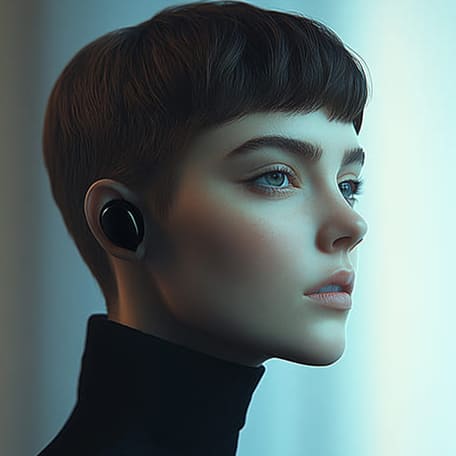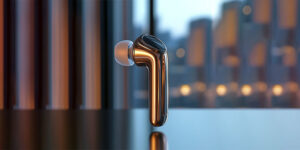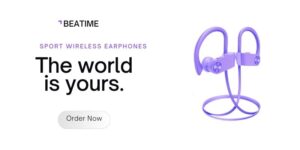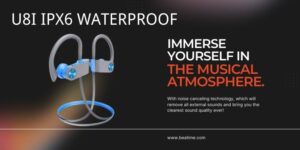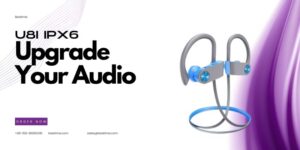
When sourcing earphones for wholesale or distribution, understanding how driver size impacts sound quality, design, and user preferences is essential for B2B clients. Driver size is more than a technical specification—it influences the earphone’s performance, marketability, and compatibility with end-user needs.
B2B clients should consider the target market’s preferences, application scenarios, and balancing sound quality with product design when deciding on driver size for their earphones.
Let’s break down the key practical considerations that will guide B2B clients in selecting the optimal driver size for their business needs.
Table of Contents
1. Market Demands and User Preferences
The preferences of your target audience are a critical factor when selecting earphones with the right driver size.
Key Market Segments and Driver Preferences
| Market Segment | Preferences | Suggested Driver Size |
|---|---|---|
| Audiophiles | High fidelity, balanced sound | 10mm – 15mm dynamic or hybrid drivers |
| Commuters | Noise isolation, compact design | 6mm – 10mm drivers |
| Gamers | Low latency, immersive soundstage | 12mm+ dynamic drivers |
| Fitness Enthusiasts | Lightweight, durable | 6mm – 8mm drivers |
Practical Tip:
For markets emphasizing portability and comfort, smaller drivers in a well-tuned housing are ideal. For audiophiles or gaming enthusiasts, larger drivers with enhanced bass response may appeal more. Learn more about target audience preferences1.

2. Application Scenarios and Use Cases
Driver size affects how well earphones perform in different scenarios, making it a key consideration for specific use cases.
Examples of Use Cases and Ideal Driver Sizes
-
Casual Listening:
- Requirement: Balanced sound for music and calls.
- Driver Recommendation: 8mm-10mm dynamic drivers for well-rounded audio.
-
Professional or Studio Use:
- Requirement: Clear treble and detailed soundstage for audio editing.
- Driver Recommendation: Balanced armature or hybrid drivers with a size optimized for clarity.
-
Active Noise Cancellation (ANC):
- Requirement: High-performance drivers that complement ANC technologies.
- Driver Recommendation: 10mm+ drivers with enhanced bass response to counteract low-frequency ambient noise.
Explore application scenarios and driver recommendations2.
3. Product Design and Portability
Driver size directly impacts the physical design of earphones, which is crucial for comfort, portability, and aesthetics.
Considerations for Design and Fit
-
Larger Drivers:
- Often require larger housings, which may affect in-ear comfort.
- Ideal for over-ear headphones but challenging for compact earbuds.
-
Smaller Drivers:
- Enable sleek, lightweight designs, making them suitable for true wireless earbuds (TWS).
- Fit better for users with smaller ear canals, increasing universal appeal.
Practical Tip:
If portability and comfort are top priorities, prioritize compact drivers (6mm-8mm). Larger drivers (10mm+) may be better suited for products where sound quality takes precedence over form factor. Learn about design considerations for earphones3.
4. Balancing Sound Quality with Cost
The size and type of driver influence not only the sound quality but also production costs. Larger or advanced drivers may increase costs, which is a critical consideration for bulk manufacturing and distribution.
Cost Implications of Driver Selection
| Driver Type | Typical Driver Size | Cost Consideration |
|---|---|---|
| Dynamic Drivers | 6mm-15mm | Cost-effective, good for general use |
| Balanced Armature Drivers | 4mm-7mm | Higher cost, precise sound |
| Hybrid Drivers | Combination | Expensive, superior sound |
Practical Tip:
To balance cost and quality, dynamic drivers offer excellent value for general-purpose earphones, while hybrid setups can cater to premium markets. Understand cost vs. performance in driver selection4.
5. Technology Compatibility
Driver size should complement the earphone’s additional features, such as ANC, wireless connectivity, and multi-driver configurations.
Examples of Technology Interactions
- Active Noise Cancellation (ANC): Larger drivers (10mm+) enhance ANC performance by providing better bass response to counter low-frequency noise.
- Low Latency Modes: For gaming earphones, large drivers paired with low-latency codecs (like aptX Adaptive) deliver immersive sound.
- Battery Efficiency: Smaller drivers consume less power, ideal for compact designs with limited battery capacity.
Explore technology interactions with driver size5.
6. Branding and Differentiation
For B2B clients, driver size can be a key selling point in differentiating their products in the marketplace.
Branding Strategies
- Highlight Larger Drivers: Market earphones as offering “powerful bass” or “cinematic sound” for larger driver designs.
- Focus on Precision: Emphasize “crystal-clear treble” or “studio-quality audio” for smaller or hybrid driver setups.
Practical Tip:
Tailor marketing strategies around driver size to align with your brand’s value proposition and target audience. Learn about branding strategies for driver-focused products6.
Conclusion
Selecting the right driver size is not a one-size-fits-all decision for B2B clients. By considering market demands, application scenarios, product design, and technology compatibility, businesses can make informed decisions to deliver earphones that meet user needs and stand out in the market.
Footnotes
- Insights into how driver size aligns with target audience preferences.
- Recommendations for driver size based on specific use cases.
- Considerations for designing earphones with different driver sizes.
- Analysis of cost implications for various driver types.
- Overview of technology compatibility and driver size interactions.
- Strategies for branding earphones based on driver size and sound quality.

